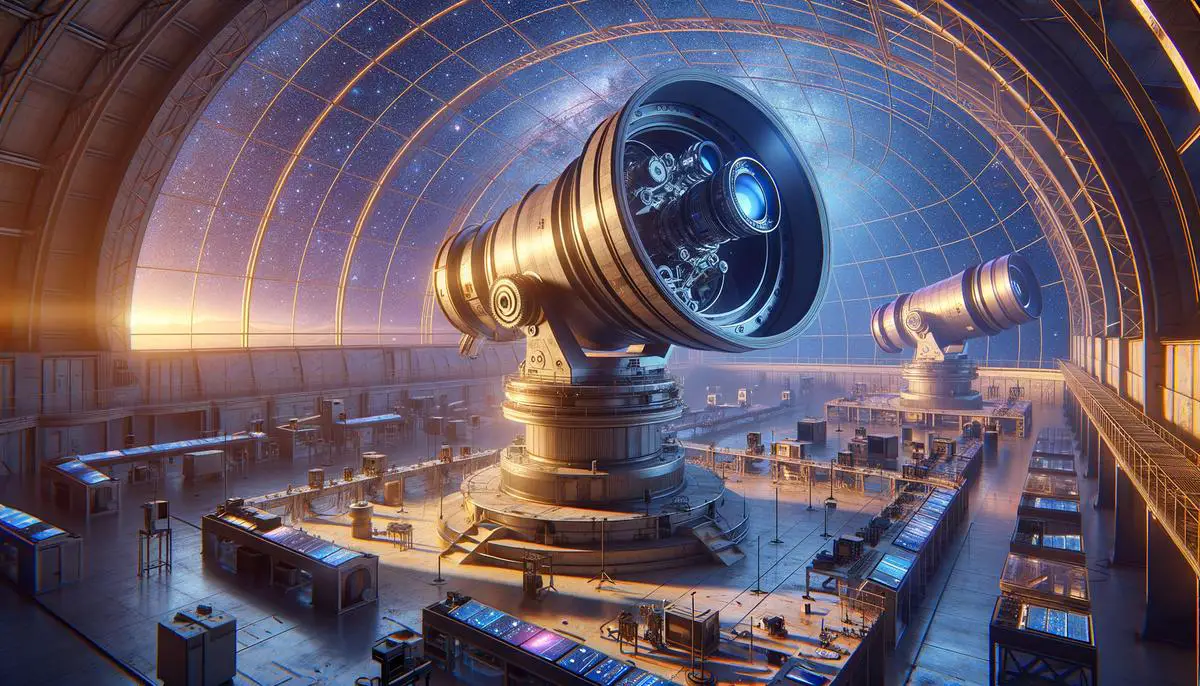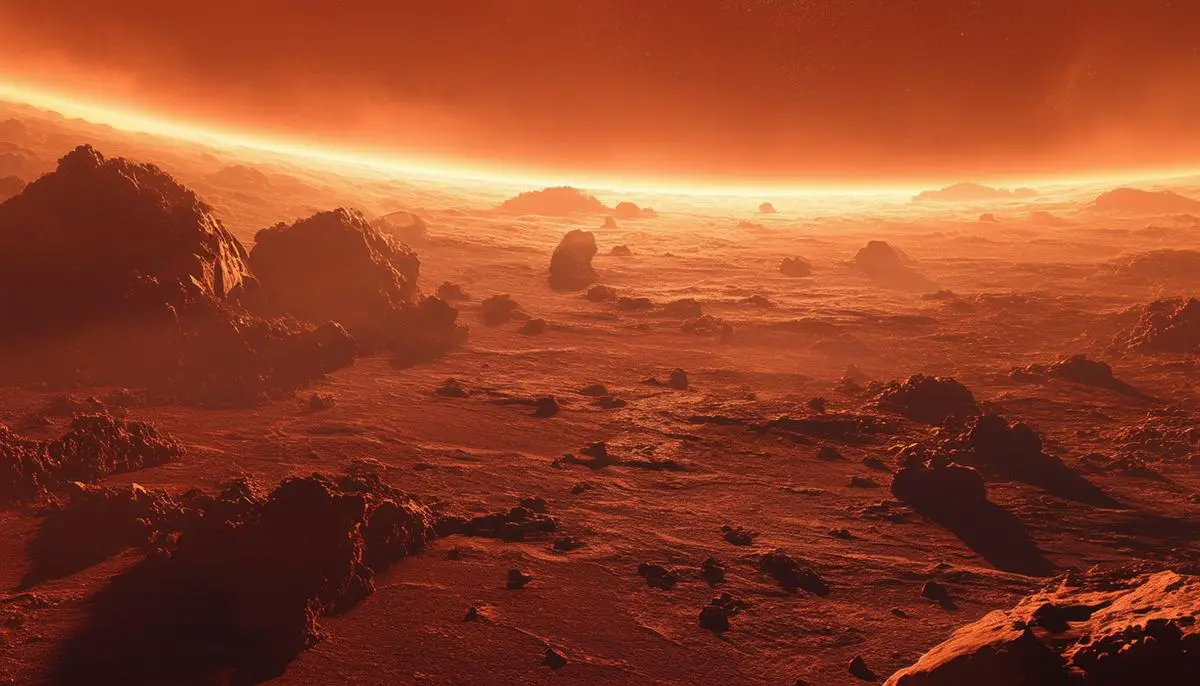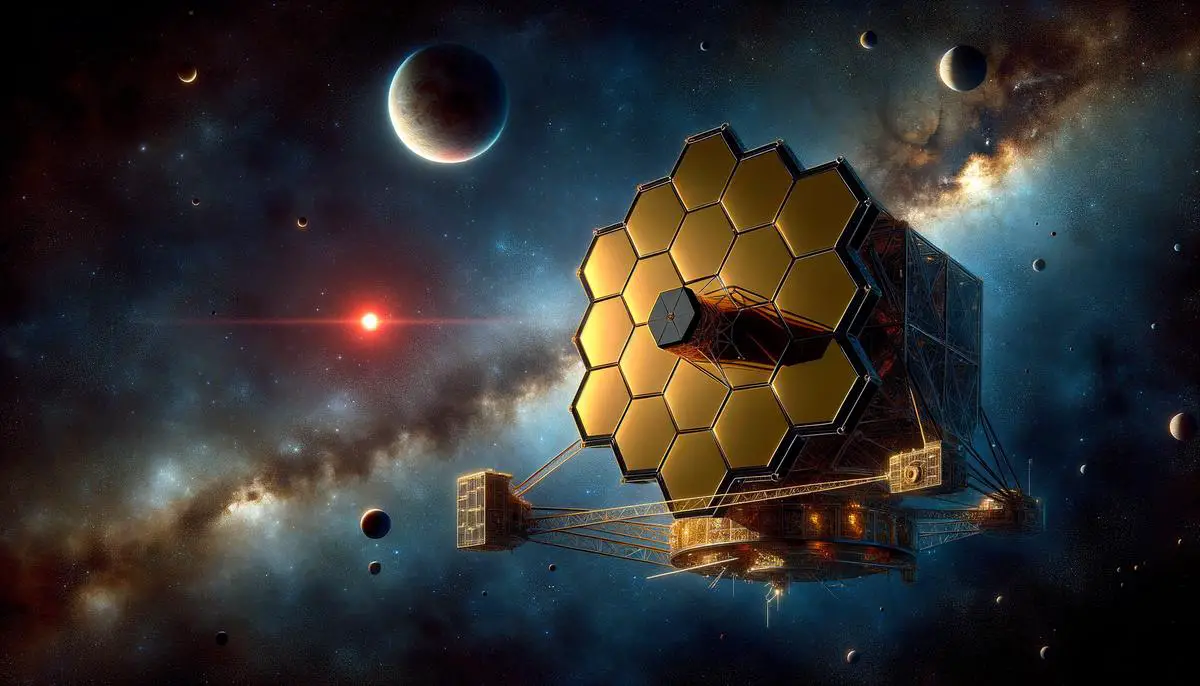Discovery of Proxima b: Earth's Closest Exoplanet Neighbor
Proxima b, an Earth-sized exoplanet, orbits Proxima Centauri, the closest star system to our sun at 4.2 light-years away. This discovery excites scientists due to its location within the habitable zone, with an orbital period of 11.2 days. The High Accuracy Radial velocity Planet Searcher (HARPS) and the Ultraviolet and Visual Echelle Spectrograph (UVES) were crucial in confirming the planet's existence.
Guillem Anglada-Escudé led the Pale Red Dot campaign, which carefully tracked Proxima Centauri's light for minute changes revealing the planet's influence on its star. The team combined years of data from multiple instruments to confirm the planet's presence, initially spotted in 2013.
Proxima b's size is about 1.3 times that of Earth, suggesting it's a rocky world. However, it faces challenges that Earth doesn't:
- Proxima Centauri, a red dwarf prone to flaring, could bombard the planet with severe radiation
- Potential stripping of atmosphere
- Less hospitable conditions compared to Earth
The Pale Red Dot campaign ruled out stellar activity as the cause of the signal, confirming a genuine planetary presence. Given Proxima b's proximity, there's potential for direct imaging and better understanding of its atmosphere in future observations.

Challenges and Potential for Habitability
Despite the excitement surrounding Proxima b's discovery, significant challenges remain for its potential habitability:
- Proxima Centauri's frequent high-energy X-ray radiation and powerful flares could strip any atmosphere
- Surface water may erode over time
- Development of primitive life forms could be hindered
Astrophysicist Artie Hatzes emphasizes concerns about whether Proxima b possesses a sufficient magnetic field to shield it from harmful exposures.
However, astronomer Ansgar Reiners offers a more optimistic perspective, suggesting that Proxima Centauri's historical activity may be more relevant than its current behavior. If Proxima b has a relatively calm stellar past, it could have retained its atmosphere and surface water. Additionally, comet and asteroid impacts could potentially replenish water resources.
The debate underscores the importance of further detailed observations. Future missions and technology advancements, such as the Extremely Large Telescope (ELT) equipped with the High Angular Resolution Monolithic Optical and Near-infrared Integral field spectrograph (HARMONI), may help uncover the mysteries surrounding Proxima b's atmosphere and surface conditions.
The potential existence of Proxima c, a more distant super-Earth, raises questions about planetary formation and the system's overall architecture. This suspected planet, orbiting every 5.2 years, might provide unique insights into planet formation theories around low-mass stars like Proxima Centauri.

Future Exploration and Research
Planned missions and advanced instruments are poised to further unravel Proxima b's mysteries:
- NASA's James Webb Space Telescope (JWST): Aims to detect potential biosignatures in Proxima b's atmosphere by analyzing emitted or reflected light, identifying key molecules like water vapor, carbon dioxide, and possible indicators of biological activity.
- Telescopes with coronagraphs: Can block out Proxima Centauri's light to capture clearer images of Proxima b and its atmospheric composition.
- Extremely Large Telescope (ELT): Housing the HARMONI spectrograph, expected to detect faint exoplanetary signals, offering detailed spectra of Proxima b's atmosphere and surface properties.
The Breakthrough Starshot initiative aims to develop and deploy small, laser-propelled nanoprobes capable of traveling at 20% the speed of light. These probes could make the journey to Proxima Centauri in just over two decades, relaying valuable data back to Earth, including high-resolution images and atmospheric analysis.
Direct imaging and spectroscopic observations can reveal:
- Composition of Proxima b's atmosphere
- Dynamic processes shaping its climate and habitability
- Crucial clues about the planet's potential to support life
While technological challenges remain, the scientific community's determination to explore Proxima b and our broader cosmic neighborhood holds promise. Each observation adds to our understanding of our place in the universe and brings us closer to answering one of humankind's most profound questions: Are we alone in the universe?

- Anglada-Escudé G, Amado PJ, Barnes J, et al. A terrestrial planet candidate in a temperate orbit around Proxima Centauri. Nature. 2016;536(7617):437-440.
- Hatzes AP. The Proxima b follow-up: a review of possibilities. Astrophys J Lett. 2017;841(2):L30.
- Reiners A, Basri G. The detectability of habitable exoplanets with Proxima Centauri as host star. Astrophys J. 2017;840(1):33.
- Lovis C, Snellen I, Mouillet D, et al. Atmospheric characterization of Proxima b by coupling the SPHERE high-contrast imager to the ESPRESSO spectrograph. Astron Astrophys. 2017;599:A16.
- Lubin P. A roadmap to interstellar flight. J Br Interplanet Soc. 2016;69:40-72.
![]()